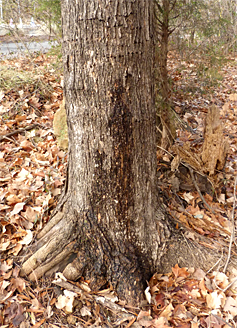
On Tuesday January 18, I noticed that the sap was flowing from a Carolina Maple in Catch the Wind. The tree is six feet or so off the path between the Vapor Rings and Mist Garden Exhibits. This tree has been the topic of previous posts.
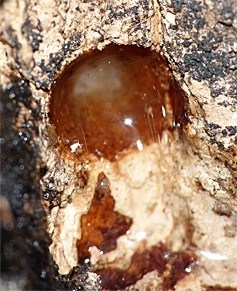
Two new sapsucker wells have been drilled into the tree and sap was flowing from the wells, covering the bark below them. There were perhaps two dozen ants crawling up and down the sap. Our old friends the False Honey Ants (Prenolepis imparis) were at work again.
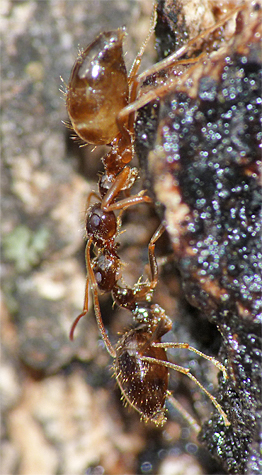
I noticed several pairs of the ants locked mandible to mandible. It was not quite obvious to me what the ants were doing. I know that these ants can stimulate each other into passing nectar or honeydew from one ant’s gut to the other by touching an area on the underside of their head called the labium, but why would they do that with all that sap flowing all around them. There was plenty of sap available for the taking.
The ants weren’t moving except for a slight twitch of an antenna here, a leg there. But none of the ants on this day were moving very fast in the not quite fifty degree temperatures.
The following day there were many more ants, and they were moving about the the tree trunk at a rapid rate. The thermometer read sixty degrees.
Again, I noticed some of the ants face to face. This time however, there appeared to be hostility in their actions. One pair actually rolled into a tangled ball and went tumbling down the side of the tree into the leaf liter. I don’t believe that this was a friendly encounter.
Perhaps there were two different colonies of these common ants attracted to the sap, and when members of opposing colonies meet, they usually fight.
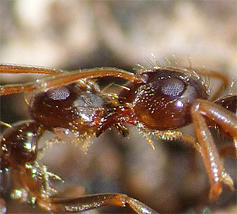
As mentioned in the previous post about these cold weather ants, they nest below the ground. To get an idea of how far below the ground check out this web site. Scroll down until you get to a photograph with a man (Dr. Walter Tschinkel) standing next to what looks like a string with clothespins attached to it. The string with clothespins is actually a plaster cast of a Prenolepis imparis (our little sap-sucking ant) nest!
Other creatures were attracted to the tree as well, not for the sap, but for what was sipping the sap. A funnel web spider had set up directly beneath the flowing sap.
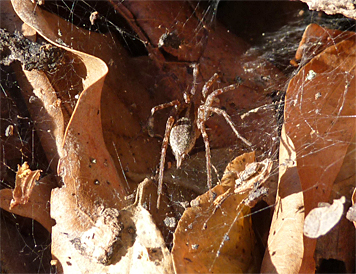
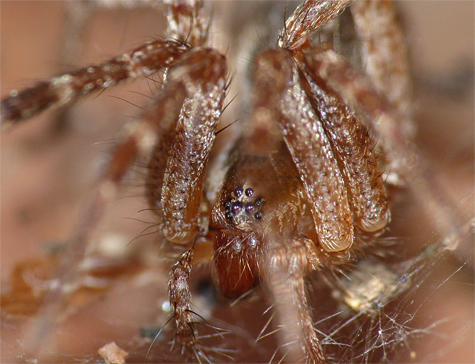
Most interesting was a Lichen Bug, more properly called a Green Lacewing Larva. These strange insects cover themselves with debris, in this case pieces of lichen, which helps conceal them from things that would eat them. These odd looking creatures capture, then suck the juices from aphids.
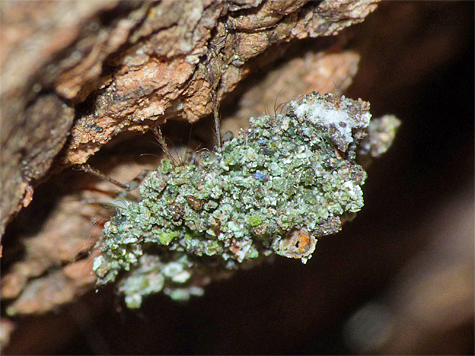
Although I didn’t see any aphids on the tree, the lacewing larva, which specializes in aphids, was probably there for a reason. I suspect that there were aphids in the area. With the sap flowing as it was, there was certainly potential for aphids to be on the scene.
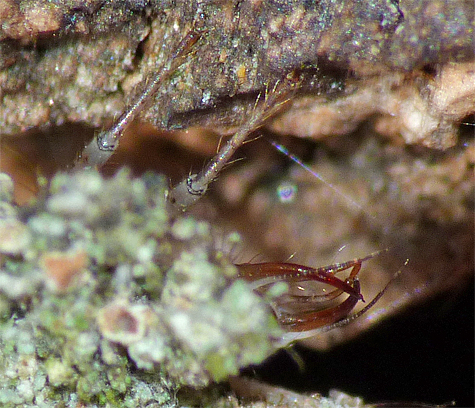
The next day (1/21) the temps were in the thirties. The wells shut down and so did the insects.